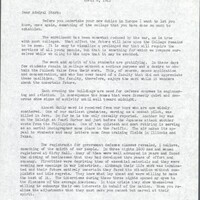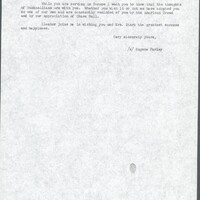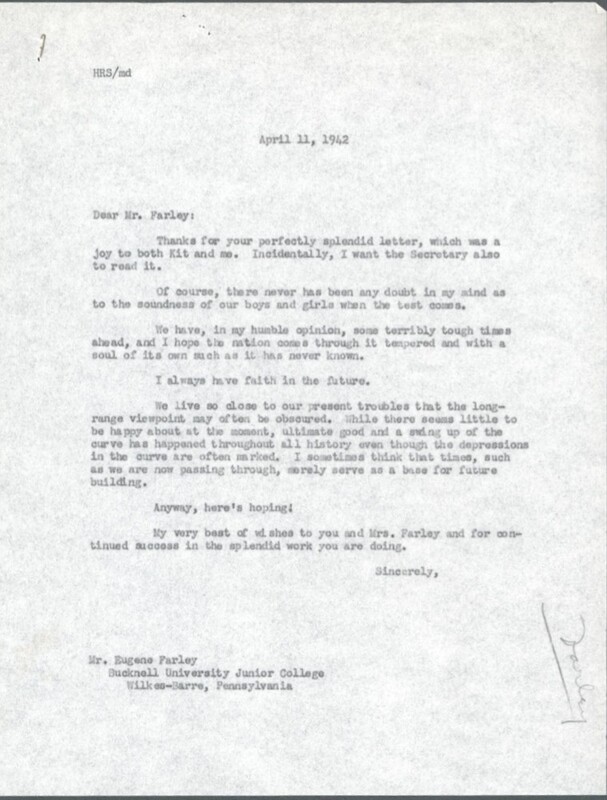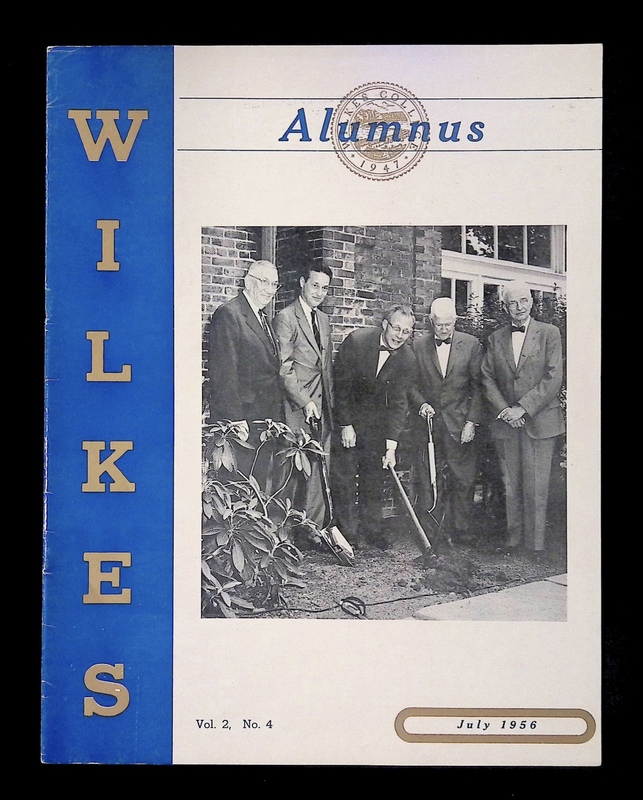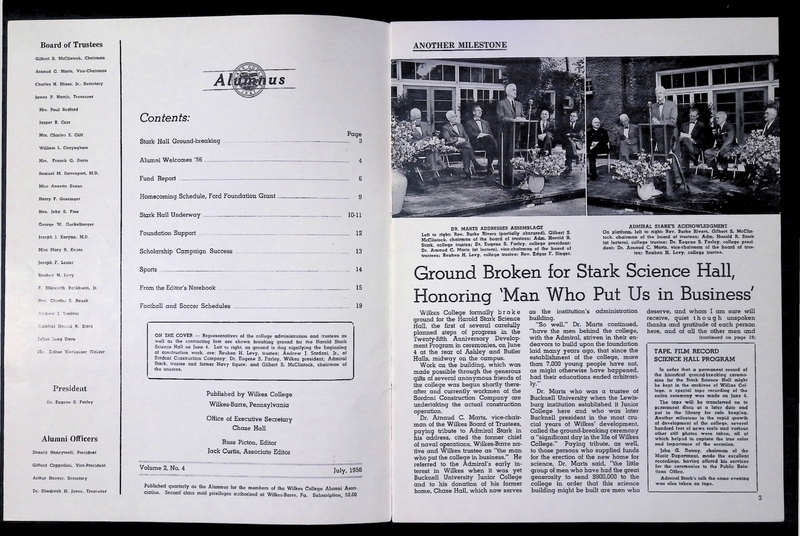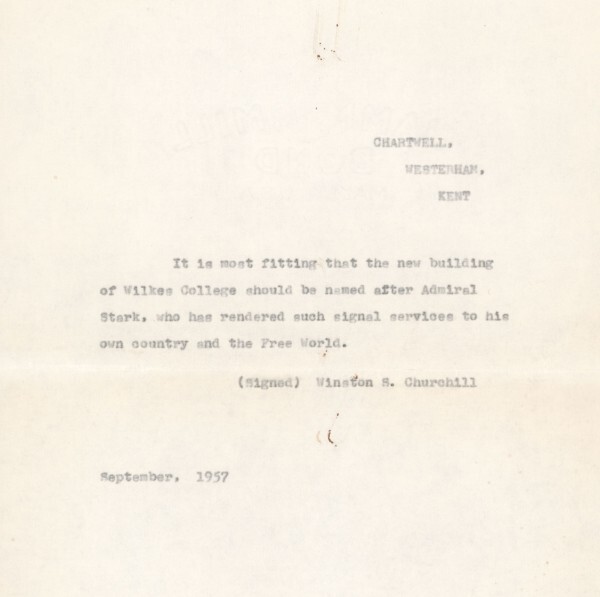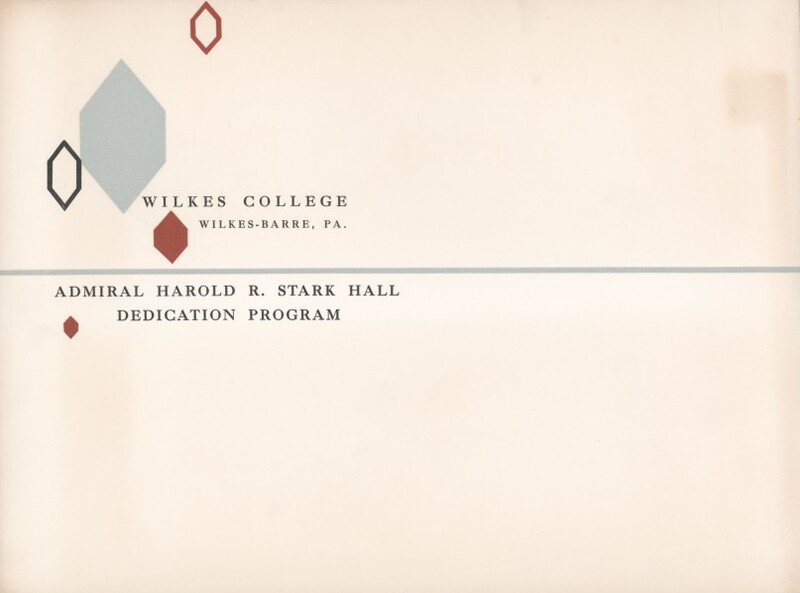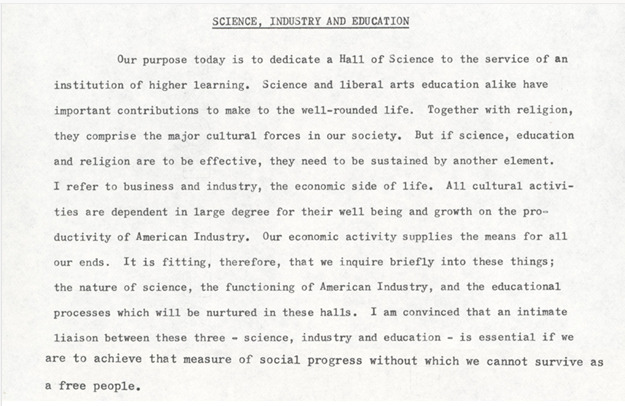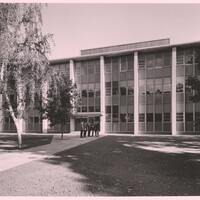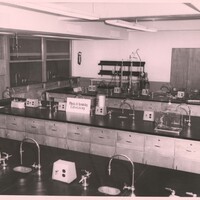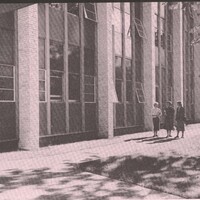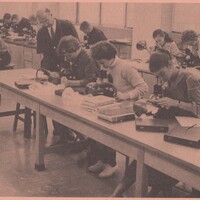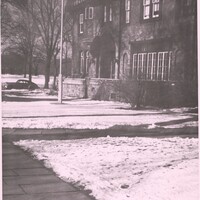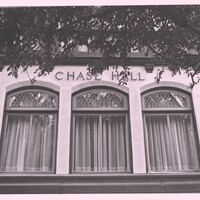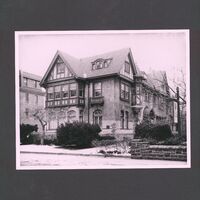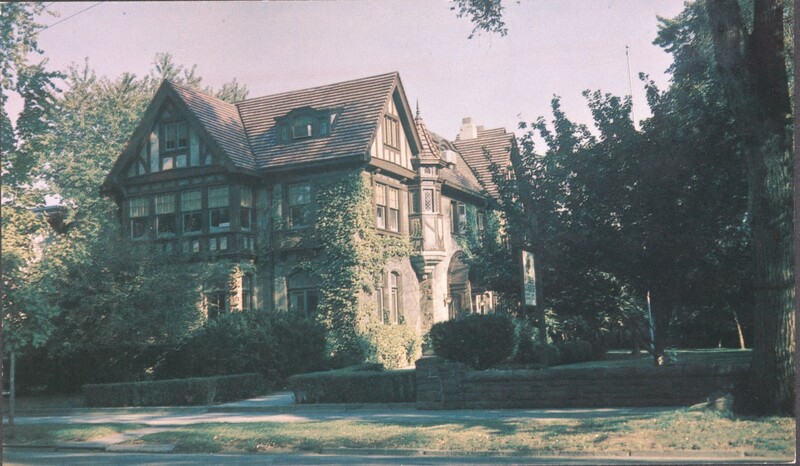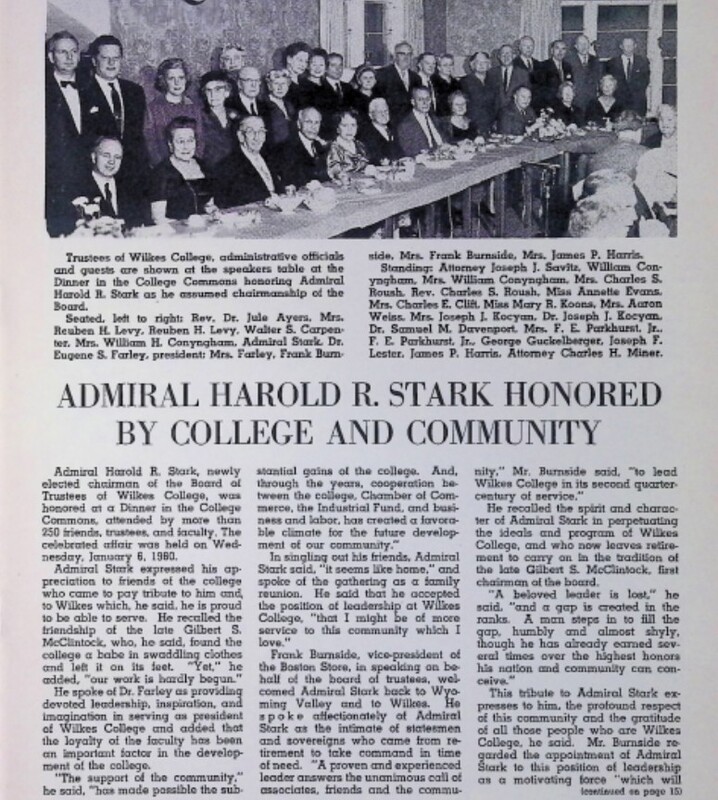Wilkes affiliation
Admiral Stark was heavily involved in the creation of Wilkes College (now Wilkes University) as we know it today throughout his career. His commitments to the institution started during his time in the military during World War II and before Wilkes, spanning the institution’s early days from 1933 to 1946 as Bucknell University Junior College.
These first items are letters from Eugene S. Farley, later the first president of Wilkes, to Admiral Stark regarding Bucknell University Junior College’s involvement in the war effort at home. In these letters, Farley describes the dedication of the students to the same cause that Stark is fighting for abroad. They excel in both everyday classes and defense teaching for the community, and Stark responds with mentions of how much of an inspiration this is to him and other members of his staff in Europe. These show his connections here, not only prior to it becoming Wilkes, but even during the war, when he had his military obligations.
After World War II, Stark came to have a more hands-on involvement within Wilkes College and was commemorated for all he had done, most notably being the honor of having Stark Hall in his name. In this issue of the Wilkes Alumnus, the groundbreaking ceremony is exhibited as the construction for the science hall begins.
On the front cover, Stark is standing among other Board of Trustees members, Gilbert Stuart McClintock and Reuben H. Levy, as well as the construction site manager, Andrew J. Sordoni, Jr., with the first Wilkes College president Eugene Shedden Farley taking the first shovelful of dirt from the hall’s future site. An article within that magazine issue details more events from the day.
Now, this dedication of Stark Hall was not only promoted by those within Wilkes, but even by people whom he had met during the war. In this letter from Winston Churchill, Stark is commended for his service in Europe during World War II, and Churchill notes how naming a building for him on the campus was a respectable thing to do for a man so dedicated to everything he set out to do. The other documents within this are from this dedication of the building itself, including the program of the event thereof as well as an image of Stark at the ceremony, pictured with other notable figures within Wilkes. A small segment of Admiral Ben Morreell's speech at the dedication on September 27, 1957 is included below in which he reflects on the vision for the building.
Morreel's words were spoken true as these photograph below reveal what the building looked like in the late 1950s and early 1960s.
Along with his long-lasting ties with the college here, he was also known for his donations to the school, including that of Chase Hall, in honor of Frederick M. Chase and his wife, who was Stark's sister. Below are photographs of Chase Hall over the years found in our Building and Donor File collection.
Finally, some of Stark’s more noted achievements inside Wilkes came after this dedication. In the copy of the Alumnus featured here, Stark is accepting his position as Chairman of the Board of Trustees for Wilkes. In this, his connection to the college becomes much more literal - beyond donations and dedications, he became involved in the decision-making and growth of the university as we know it today. He is pictured among other staff here at a dinner for his recognition as the Chairman, and the acceptance speech made at that time honored other members of staff, such as Eugene Farley, which cemented Stark as more of a humble individual, thankful for the honor he has received with this position.
